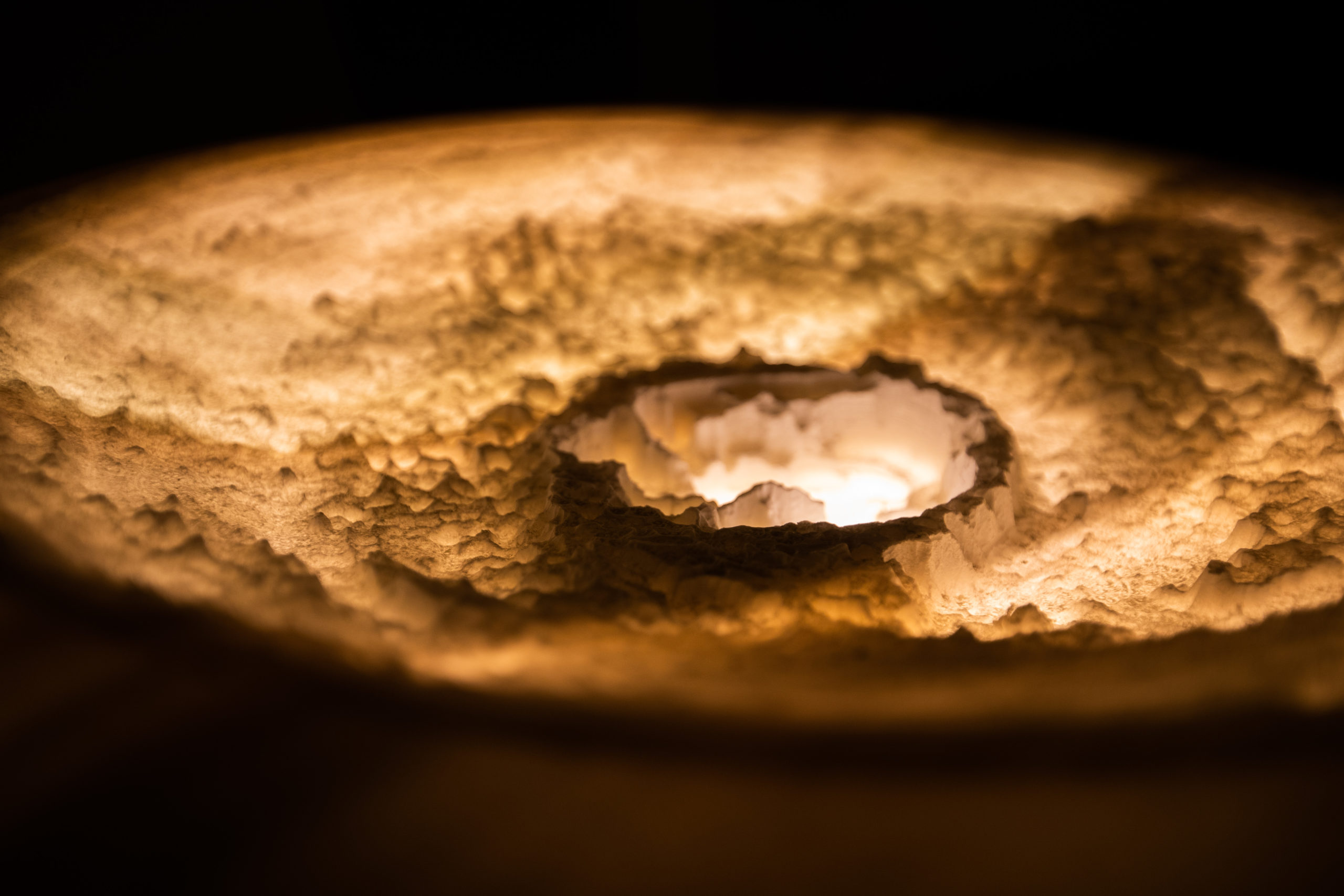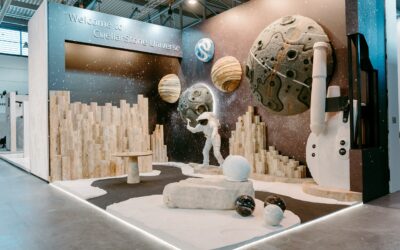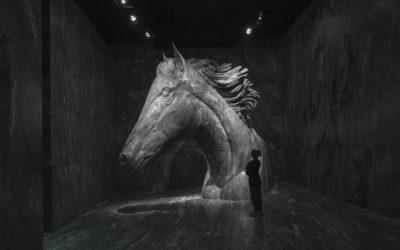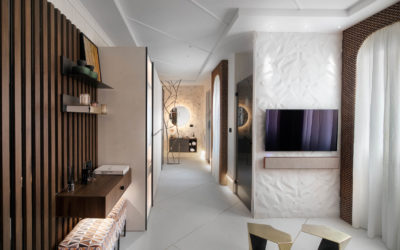The natural stone backlighting combines two primary elements (light and stone) to shape a range of design and decoration possibilities with the only limit of imagination, providing personality and exclusivity. Natural stones with a low degree of opacity such as onyx or alabaster are preferably chosen for backlighting.
Nowadays, more and more designers, architects and interior designers use “translucent stones” to add a different touch to each project.
Cuellar Stone, with long years of experience in the knowledge of materials as well as their application in backlighting work, has developed various projects with architecture studios and designers of the highest level such as Foster and Partner. With this architecture study, a cube was made in Macael White Marble simulating life on Mars and reaching a design challenge, since I know that I got to work in areas of the marble cube with thicknesses of up to 2 mm to make the backlighting effect more spectacular.
This work was carried out under the initiative carried out by Cosentino London, for the London Design Festival, where designers and architects from all over the world presented their proposals on how they perceived life on Mars, translating them into their designs. Here we can see the combined effect of light and marble, also highlighting the organic finish on the faces of the cube.
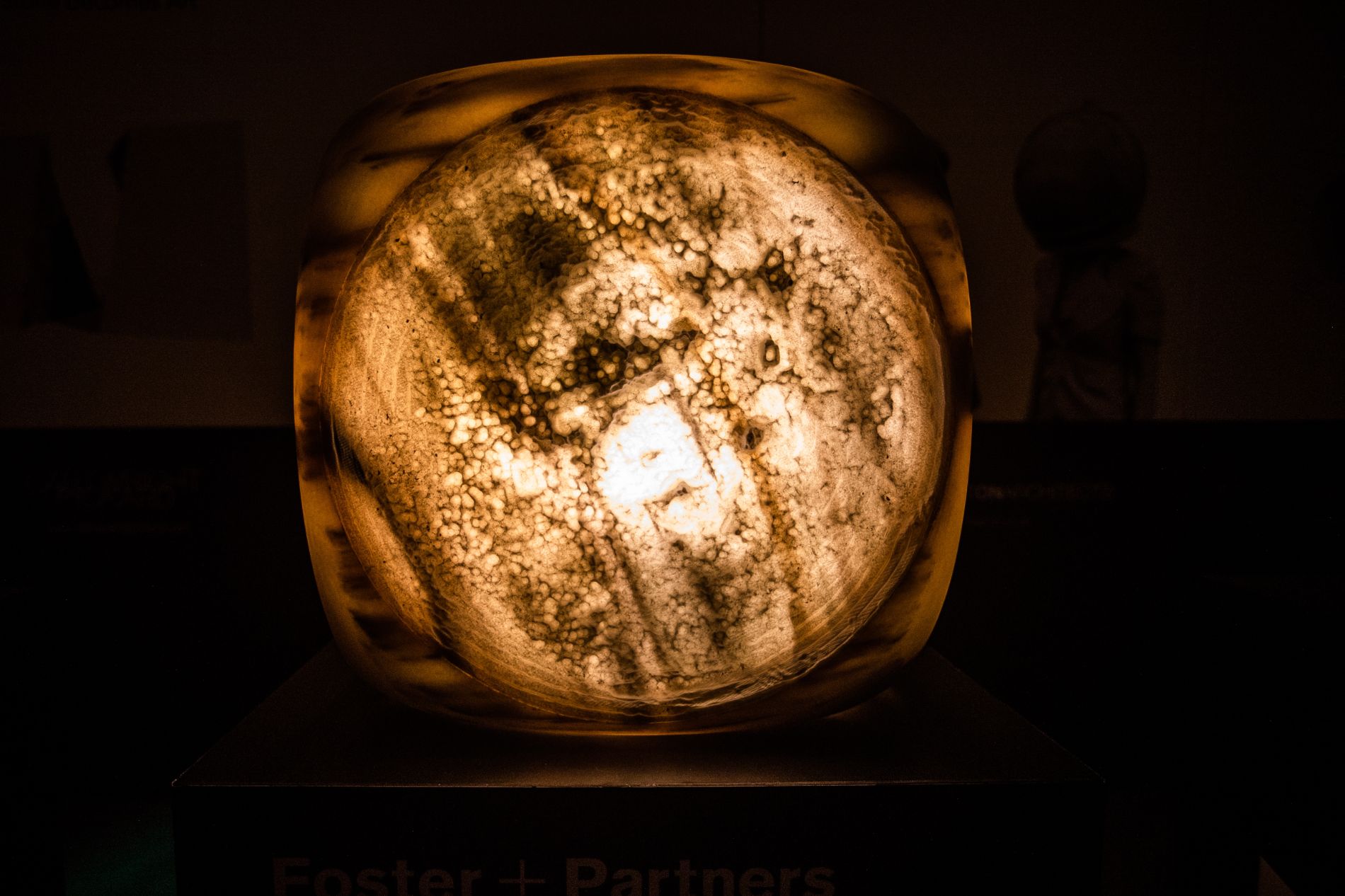

The most common materials used for backlighting are onyx and alabaster and they are the most translucent and veined stones, being able to create unique and luxurious spaces.
Its application is very diverse as we can see in this backlighting of the hall of this magnificent hotel using Honey Onyx for its development. The lamp effect of the stone allows you to create different perceptions of the place by playing with its light.


